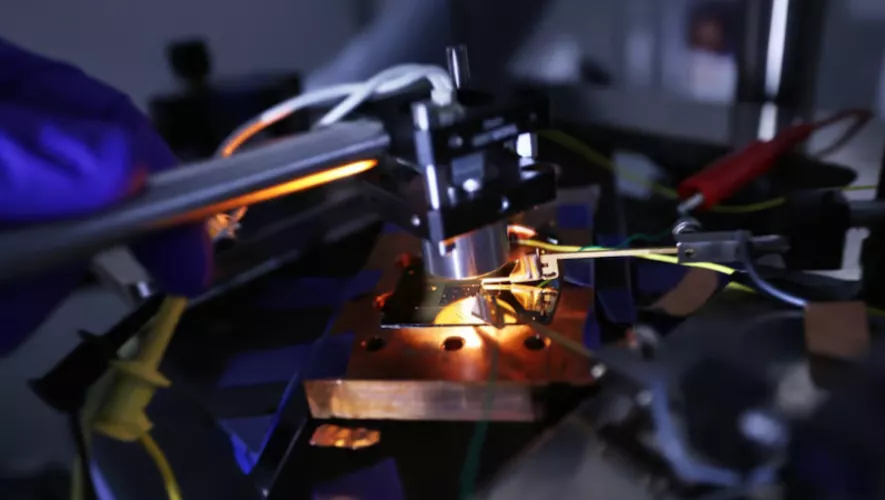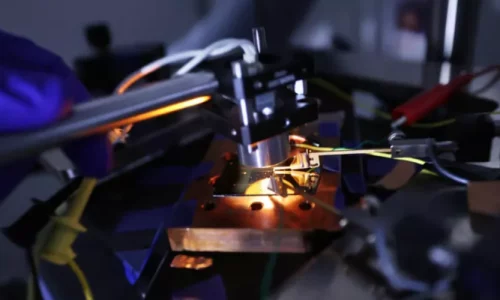A new heat-to-electricity converter has achieved a record efficiency of 44%. By comparison, the average steam turbine achieves about 35%, reports the trade magazine Elektrotechnikautomatyk.co.uk. According to a report by New Atlas[1], researchers at the University of Michigan have developed a cost-effective and highly efficient thermophotovoltaic cell that converts heat into energy.
According to the portal, the cells developed at the aforementioned university absorb photons from the infrared part of the spectrum as heat, while normal photovoltaic cells absorb them from visible light. The energy generated by the clean sources can be discharged as heat into these cells and later extracted again as electricity.
This is an extremely important discovery. Recall that in the case of solar panels, solar energy production peaks during the day, but its consumption is highest after dark. Wind production also suffers from the intermittent nature of air flows, making storage the key to realizing the full potential of these renewable energy sources.
And this is where the issue of energy storage comes in. The idea is that the storage material can be heated using electricity generated by a wind or solar farm, or by directly absorbing excess heat from industrial processes or solar energy systems. This material may have only half the capacity of lithium-ion batteries, but it is much safer and cheaper to produce and operate.
“It’s a type of battery, but a very passive one. You don’t need to mine lithium, as is the case with electrochemical cells, which means it doesn’t compete with the electric vehicle market. Unlike pumped water to store hydroelectric energy, this type of battery can be placed anywhere and you don’t need a source of water nearby,” said Stephen Forrest, professor of electrical engineering and co-author of the study[2].
The new thermophotovoltaic cell was tested with silicon carbide as the heat storage material, although it could be swapped for anything else that works. It is surrounded by a semiconductor material made of indium, gallium and arsenic, carefully designed to capture the widest range of photons, particularly those produced by the heated material. The design provides a total energy conversion efficiency of 44%. It is therefore much more efficient than other designs operating at the same temperature.
The location of the work is no coincidence. The University of Michigan is one of the world’s elite educational institutions, known for its rigorous academic standards and key role in the development of research and technology.
Przełom w pozyskiwaniu energii elektrycznej z ciepła | elektrotechnik AUTOMATYK
[1] M. Irving, Thermal power cell harvests electricity from heat at record efficiency, https://newatlas.com/energy/heat-battery-record-efficiency-grid-scale-energy-storage/ (dostęp: 15.07.2024 r.).
[2] P. DeLacey, Renewable grid: Recovering electricity from heat storage hits 44% efficiency, https://news.umich.edu/renewable-grid-recovering-electricity-from-heat-storage-hits-44-efficiency/ (dostęp: 15.07.2024 r.).
fot. Uniwersytet Michigan





